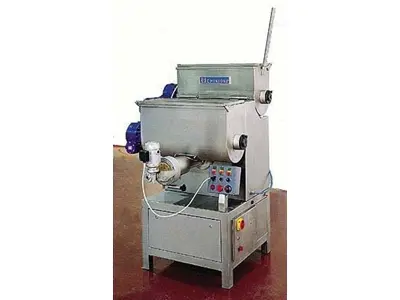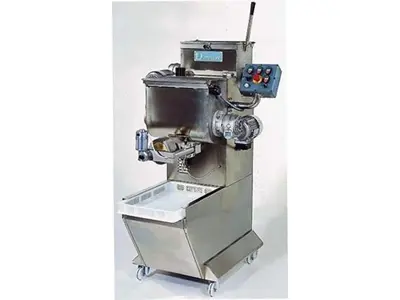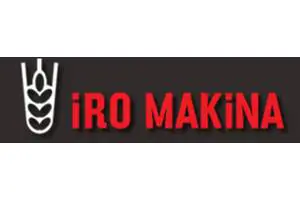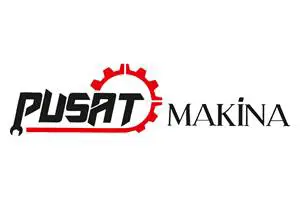What is a Pasta Machine?
A pasta machine is a device used in making pasta. Pasta machines are generally designed for home use and come in different models and features. Many pasta machines work manually, requiring the user to turn a handle to knead and shape the dough. Some models, however, are electric and come with automatic functions. An electric pasta machine automates tasks such as kneading, rolling, and cutting the dough, saving the user time and effort.
A pasta machine is a convenient device that allows pasta enthusiasts to easily make fresh pasta at home. Made from high-quality materials and easy to use, a pasta machine is available in different brands and models in the market. By selecting a pasta machine that suits your preferences and needs, you can enjoy delicious and fresh pasta recipes.
Types and Uses of Pasta Machines
Making pasta can be an enjoyable activity for many individuals. To simplify and enhance the pasta-making process at home, pasta machines are preferred. Pasta machines are designed to meet various needs with different types and uses. In this article, we will discuss the types and uses of pasta machines.
- Pasta Cutting Machine: A pasta cutting machine is a device used to cut and shape prepared pasta dough. It usually works manually, and the pasta cutting machine can cut pasta into different shapes. For example, it can be used to make spaghetti, tagliatelle, fettuccine, and other pasta types of varying thicknesses and shapes.
- Pasta Making Machine: A pasta making machine is used to prepare, knead, and shape pasta dough. This machine typically operates electrically and has automatic functions. The pasta making machine facilitates the production of fresh pasta by kneading and shaping the dough. Additionally, special molds can be used in a pasta making machine to create different pasta shapes.
- Pasta Rolling Machine: A pasta rolling machine is used to roll pasta dough to the desired thickness. This machine usually operates manually and gradually thins the dough with cylinders. By rolling the dough thinner with each pass, the desired thickness is achieved. A pasta rolling machine is a significant tool in homemade pasta production.
- Pasta Boiling Machine: A pasta boiling machine is a device used to boil a large quantity of pasta quickly and effectively. This machine is commonly used in commercial kitchens or restaurants. It rapidly boils water and cooks the pasta for a specific period. Therefore, the pasta boiling machine saves time and effort for establishments requiring intensive pasta cooking.
- Electric Pasta Machine: An electric pasta machine is a machine with automatic functions that operates on electric power. This machine automatically kneads, shapes, and cuts the dough. An electric pasta machine is an ideal option for those who want to make fresh pasta quickly and conveniently.
- Noodle and Pasta Machine: A noodle and pasta machine is a specialized machine used in making long and wide pasta types, especially noodles. This machine helps to roll the dough to a certain thickness and then cut it to the desired width. It plays a significant role in traditional pasta making.
- Automatic Pasta Machine: An automatic pasta machine is a kitchen device that automatically performs tasks such as dough rolling, kneading, cutting, and shaping. Users place dough ingredients in the automatic pasta machine and make necessary adjustments. The machine automatically mixes, kneads, rolls, cuts, or shapes the dough according to the desired pasta types. This allows users to efficiently produce various pasta types, save time, and have an easier kitchen experience.
Noodle and Pasta Machine
A pasta machine and a noodle machine are kitchen tools that make the dough-rolling and shaping processes convenient. These machines, used in both pasta and noodle making, facilitate a series of processes from dough preparation to rolling, cutting, and shaping the dough.
A pasta machine typically allows you to roll out the prepared dough while leaving the cutting process to you. With a pasta machine, you can roll the dough to the desired thickness and create pasta in different shapes. Advanced pasta machine models can automatically perform all processes from mixing the dough to shaping it.
A noodle machine, on the other hand, focuses more specifically on the process of noodle making by rolling and cutting the dough into thin strips. Typically capable of cutting into thin strips, a noodle machine allows you to adjust the thickness of the dough and obtain different noodle types.
Both machines enable you to easily prepare delicious and fresh pasta or noodles. They come in manual or automatic models and usually come with user manuals. Noodle and pasta machine varieties range from small models suitable for home kitchens to large-capacity machines used in industrial-scale pasta production.
Both machines streamline the process of dough rolling and shaping, making it easier to prepare tasty pasta and noodles in both home and professional kitchens.
Working Principle of a Pasta Machine
The working principle of a pasta machine includes the stages of dough preparation, kneading, shaping, and cutting. Here's how a pasta machine works:
1. Dough Preparation: The first step in making pasta is preparing the dough. In this stage, you mix and combine the ingredients for the pasta dough. Typically, pasta dough ingredients include flour, eggs, water, and sometimes salt. By mixing the ingredients, you create a homogeneous dough.
2. Kneading: After preparing the dough, the pasta machine carries out the kneading process. Kneading increases the dough's elasticity, making it easier to shape. If you are using a manual pasta machine, you knead the dough by hand to achieve an elastic consistency.
3. Shaping:AFTER KNEADING the dough, place the dough in the shaping part of the pasta machine. The pasta machine uses a series of cylinders or molds to make the dough into a thin layer and create the desired pasta shapes. The pasta rolling machine passes the dough through the rollers or molds to thin it out and shape it.
4. Cutting: The shaped dough reaches the cutting section of the pasta machine, where special cutting attachments or blades are used to cut the desired pasta shapes. A pasta cutting machine typically offers different cutting options, allowing you to obtain various pasta types like spaghetti, tagliatelle, fettuccine, and more.
5. Drying: The cut pasta is placed on a drying rack for drying. The drying rack allows the pasta to be exposed to air, facilitating the evaporation of moisture. This stage helps the pasta harden and last longer.
A pasta machine streamlines and speeds up the stages of dough preparation, kneading, shaping, and cutting. It comes in manual or electric models, offering users the opportunity to make fresh and customized pasta. By following the pasta machine's instructions for use, you can easily prepare delicious homemade pasta.
Pasta Machine Prices
The prices of pasta machines can vary depending on the brand, model, features, and sales point. There are many options available in various price ranges.
Prices can vary based on brand reputation, material quality, durability, functionality, and design. While more affordable models may meet basic needs, higher-priced models may offer more advanced features.
When purchasing a pasta machine, it is essential to consider your budget, needs, and preferences. Additionally, comparing different brands and models when exploring pasta machine prices can help evaluate the price-performance ratio. By researching stores, online retail sites, and discounts, you can find the best prices.









